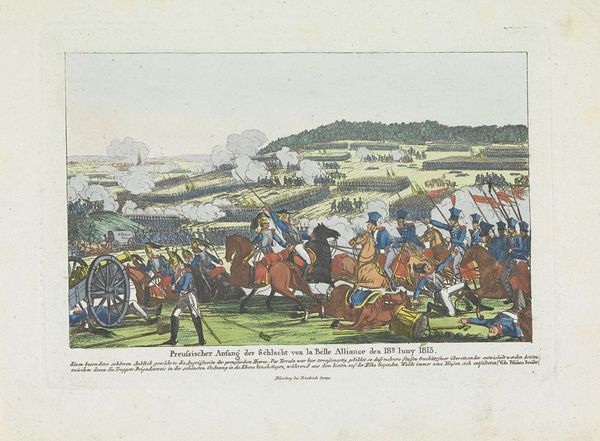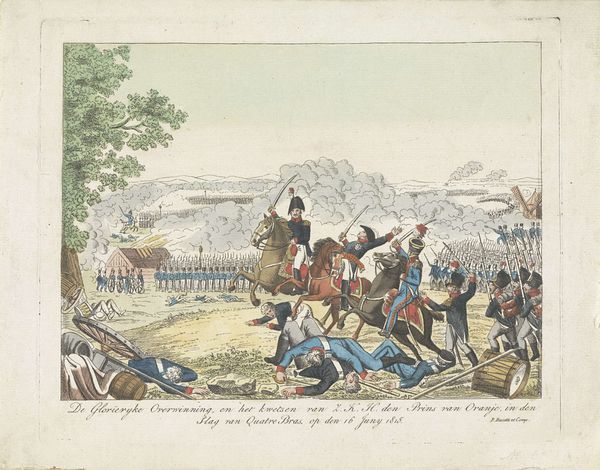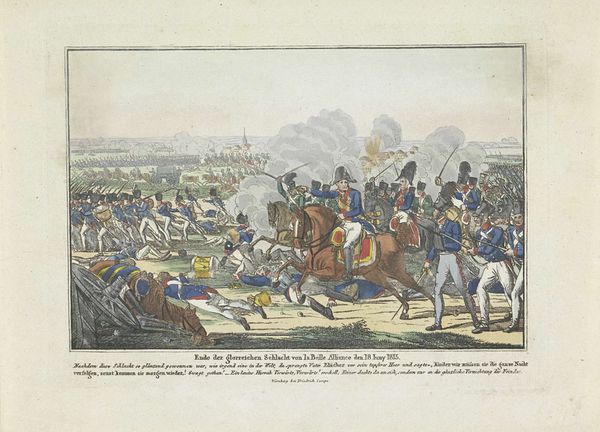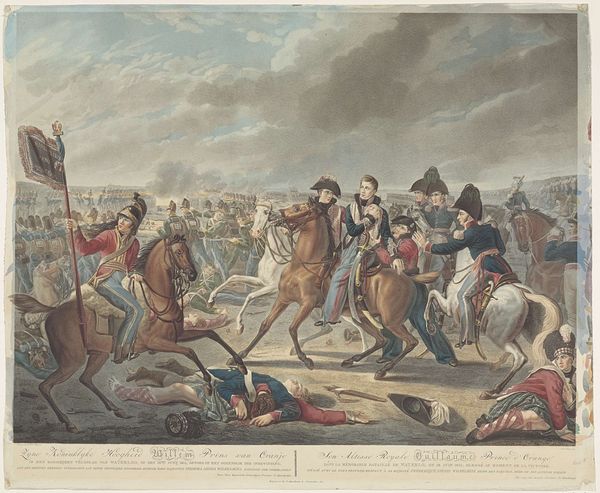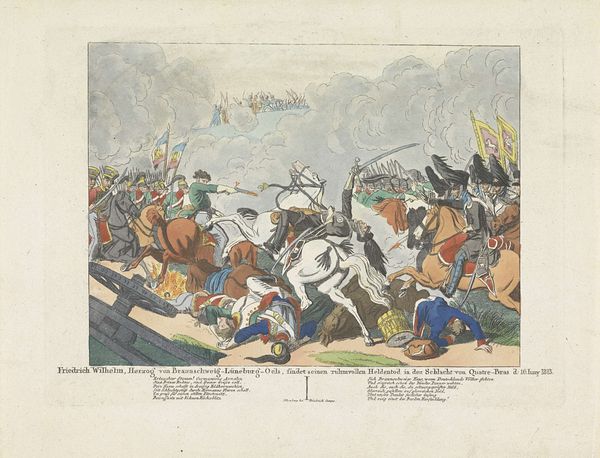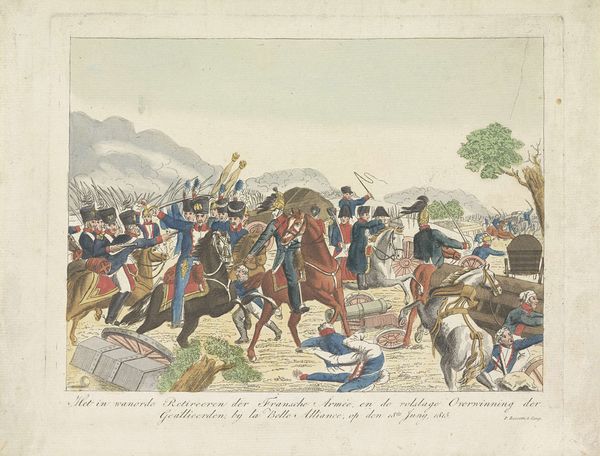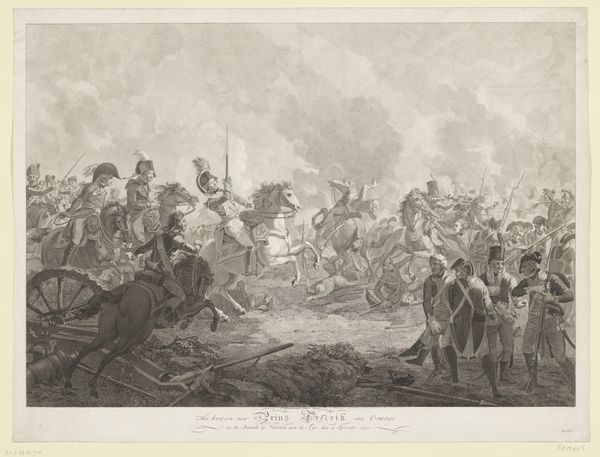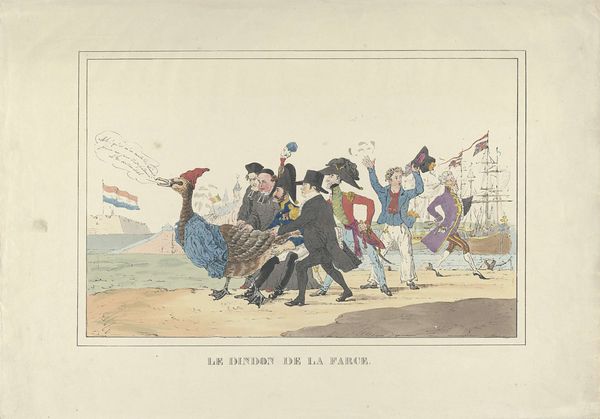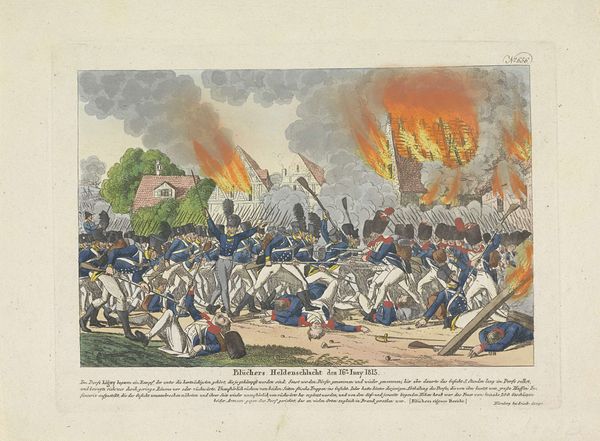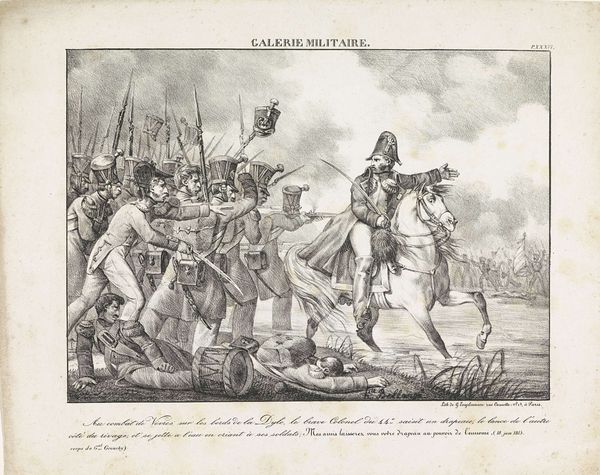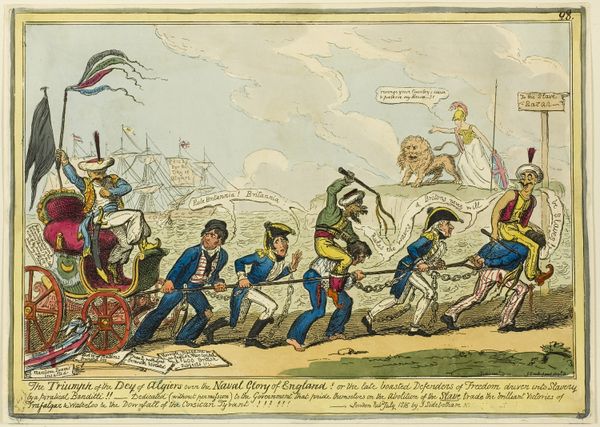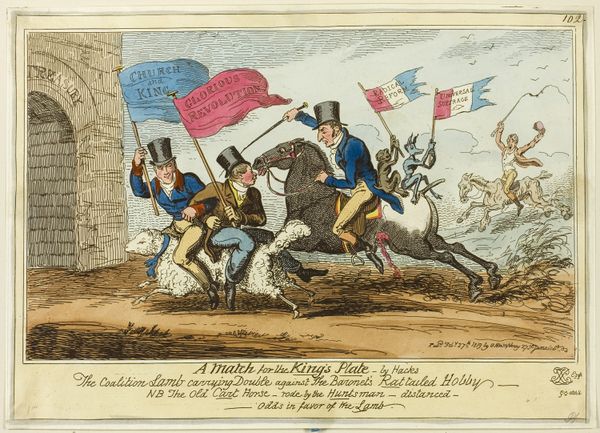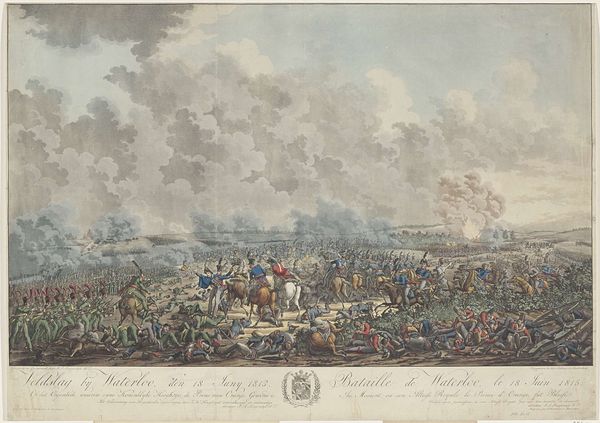
Vlucht van de Fransen na de nederlaag in de slag bij Waterloo, 1815 1815
0:00
0:00
anonymous
Rijksmuseum
print, engraving
# print
#
landscape
#
figuration
#
romanticism
#
history-painting
#
engraving
Dimensions: height 186 mm, width 255 mm
Copyright: Rijks Museum: Open Domain
Curator: Oh, my. It feels chaotic, almost desperate, doesn’t it? A visual cacophony of movement and overturned expectations. Editor: Indeed. What we see here is an engraving dating back to 1815. It's an anonymous work housed at the Rijksmuseum, titled “Flight of the French after the defeat at the Battle of Waterloo." Curator: Waterloo... you can almost feel the muddy ground and smell the gunpowder just by looking at this print. The figures, especially the horses, are so expressive in their panic. Look at that poor beast collapsing under its rider! It’s Romanticism at its most visceral. Editor: Observe how the anonymous artist masterfully employs a receding line perspective. The foreground bursts with tumbling soldiers and abandoned weaponry, creating a strong sense of depth, while the background fades into an almost smoky obscurity, filled with faceless, fleeing masses. This clever manipulation not only amplifies the spatial dimensions of the battle, but it also underscores the overarching theme of a crumbling army dissolving into chaos. Curator: It's the absence of glory, really, isn’t it? Forget heroism; this is just pure, unadulterated retreat. It’s humanity laid bare – self-preservation at any cost. Though one could imagine all kinds of justifications for war or othering one's perceived enemy, this print shows people on both sides are subject to pain, death, fear, and running away in all sorts of different manners, which puts this in some refreshing contrast with standard heroic renderings of similar content matter. Editor: Precisely. The use of engraving as a medium enhances this sense of stark realism, allowing for fine lines and details to convey both the brutality of the scene and the raw emotions etched on the faces—or what we can see of them, at least. There’s a curious beauty even within this defeat, wouldn't you say? Curator: I do! What began as merely “chaotic and desperate” may well remain that but be much more now. Now, I think it holds up a shattered mirror for us, still capable of reflecting deeper human truths back toward ourselves and to anyone with a wandering eye. Editor: An incisive reading. Thank you.
Comments
No comments
Be the first to comment and join the conversation on the ultimate creative platform.
